After the Three Views were composed in the 17th century, many authors have come up with their own lists of Japanese sites and attractions. While there are countless lists and variations thereof, here is a selection of the best-known ones:
Views
Three Views
.jpg.webp)
- Sankei (三景). The most famous list of them all, attributed to scholar Hayashi Gahō back in 1643. They follow the Snow-Moon-Flower (雪月花) aesthetic with Amanohashidate representing the snow (雪), Matsushima representing the moon (月), and Miyajima representing the flower (花), although the "flowers" are said to actually be the autumn leaves.
New Three Views
日本新三景
- Onuma, Hokkaido
- Miho no Matsubara, Shizuoka
- Yaba Valley, Oita
Three Great Night Views
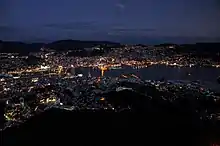
三大夜景 Sandaiyakei
New Three Great Night Views
新三大夜景 Shin-sandaiyakei
- Kitakyushu seen from Mount Sarakurayama,
- Nara seen from Mount Wakakusayama
- Yamanashi seen from Fuefuki River Fruit Park
Castles
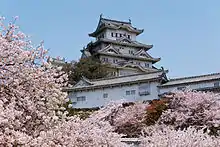
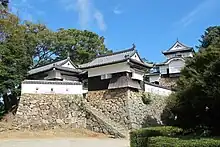
Three Famous Castles
三名城 Sanmeijō. A list written by Ogyu Sorai in the Edo Period. He chose these three castles as the top among those designed by Kato Kiyomasa and Todo Takatora who he considered to be the best castle designers. All three are modern reconstructions, since Kumamoto Castle burned down during the 1877 Satsuma Rebellion and Nagoya and Osaka Castles were destroyed during World War II. Himeji Castle, widely recognized as Japan's greatest surviving castle, didn't make the cut back in the late 1600s.
Three Great Mountain Castles
三大山城 Sandaiyamajiro
- Bitchu Matsuyama Castle Takahashi
- Iwamura Castle Iwamura
- Takatori Castle Takatori
Three Great Flatland Mountain Castles
三大平山城 Sandaihirayamajiro.
- Himeji Castle in Himeji, Hyogo
- Matsuyama Castle in Matsuyama, Ehime
- Tsuyama Castle in Tsuyama, Okayama
Three Famous Gardens
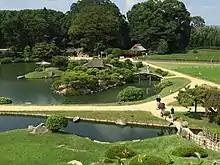
三名園 Sanmeien
It is unclear when these gardens were chosen or by whom. The first recorded list dates back to 1899, but a postcard bought by Shiki Masaoka from his visit to Korakuen Garden in 1891 has "Korakuen Garden, Number 1 of the Top 3 Gardens" written on the back. It is widely believed that the gardens follow the "Snow-Moon-Flower" (雪月花) aesthetic coined by a famous Chinese poem by Bai Juyi. Kenrokuen Garden, famous for its snowy scenery, represents the "Snow" (雪), Korakuen Garden, which to this day has an autumn moon-viewing event, represents the "Moon" (月), and Kairakuen, known for its early spring plum blossoms, represents the "Flower" (花). In addition, each of the gardens are strolling gardens built by famous daimyo (The Tokugawa built Kairakuen, the Ikeda built Korakuen, and the Maeda built Kenrokuen) which is also believed to have played a role in which gardens were given the prestigious designation.
Festivals
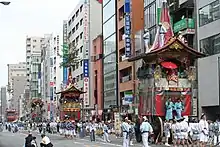
.jpg.webp)
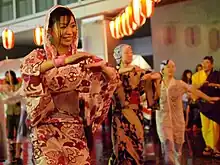
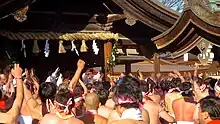
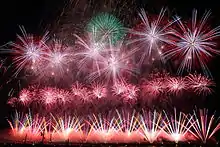
Three Great Festivals
三大祭り Sandai Matsuri
The Nebuta Matsuri of Aomori is often considered to be one of the top three festivals, but it is actually only listed as one of the top three festivals of the Tohoku region (below).
Three Great Festivals of Tohoku
東北三大祭り Tohoku Sandai Matsuri
Three Great Festivals of Kyoto
京都三大祭り Kyoto Sandai Matsuri
- Gion Matsuri
- Aoi Matsuri
- Jidai Matsuri
Three Great Festivals of Shikoku
四国三大祭り Shikoku Sandai Matsuri
Three Beautiful Festivals
日本三大美祭り Nihon Sandai bimatsuri
- Gion Festival (Kyoto, Kyoto)
- Takayama Festival (Takayama, Gifu)
- Chichibu Yomatsuri (Chichibu, Saitama)
The beauty list is often referenced interchangeably with the Three Great Float Festivals (日本三大曳山祭り Nihonsandai hikiyamamatsuri), which sometimes features Nagahama's Hikiyama Festival in place of the Chichibu Yomatsuri.
Three Great Obon Festivals
日本三大盆踊り Nihon Sandai Bonmatsuri
Three Great Naked Festivals
日本三大裸祭り Nihon Sandai Hadakamatsuri
- Saidaiji Eyo (Okayama, Okayama)
- Wakamiya Shrine Autumn Festival (Bungotakada, Oita)
- Konomiya Naked Festival (Inazawa, Aichi)
Some lists replace the Konomiya Naked Festival with the Hadakabo Festival in Hofu, Yamaguchi or the Furukawa Festival in Hida, Gifu.
Three Great Fireworks
日本三大花火 Nihon Sandai Hanabi
- Omagari Fireworks (Daisen, Akita)
- Tsuchiura All Japan Fireworks (Tsuchiura, Ibaraki)
- Nagaoka Fireworks (Nagaoka, Niigata)
Hot Springs
Certainly one of the more hotly contested categories. (No pun intended).
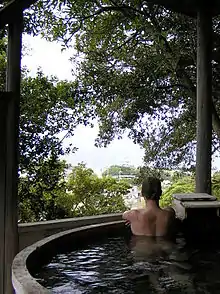
Three Great Hot Springs
三大温泉 Sandaionsen
Three Famous Springs
三名泉 Sanmeisen. Authored by Hayashi Razan, father of Hayashi Gahō.
Three Old Springs
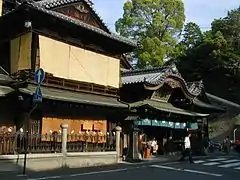
三古湯 Sankosen
Three Baths of Fusō
扶桑三名湯 Fusō-sanmeiyu. Fusō is a poetic name for Japan and this one is credited to traveling haiku poet Matsuo Basho.
Shrines
Three Great Inari Shrines
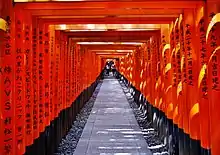
.jpg.webp)
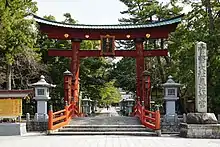
三大稲荷 Sandai Inari
- Fushimi Inari Shrine, Kyoto
- Toyokawa Inari Shrine, Aichi
- Saijō Inari, Okayama or Yūtoku Inari Shrine, Kashima
As the head of all Inari shrines, Fushimi Inari Shrine is naturally one of the top three, but there is little historical or present consensus on the others. After Fushimi Inari, the list varies depending on the source. Takekoma Shrine in Iwanuma and Kasuma Inari Shrine in Kasama are also suggested by some.
Three Great Tenjin Shrines
三大天神 Sandai Tenjin
All Tenjin (Tenmangu) shrines are dedicated to the worship of Sugawara Michizane. This top three list actually highlights his exile from Kyoto to Dazaifu. Along the way, he stopped in Hofu and built the first Tenjin shrine. Official dedication of shrines to him began after his death when a series of natural disasters and tragedies in the capital were believed to be caused by his restless soul seeking vengeance for his unjust exile. Kitano Tenmangu was built to pacify him.
Three Great Hachiman Shrines
三八幡 San Hachiman
Three Great Torii
三大鳥居 Sandai Torii
Temples
Three Sacred Grounds
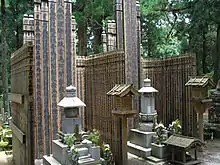
三大霊場 sandai-reijo
Three Holy Places of Ōshū
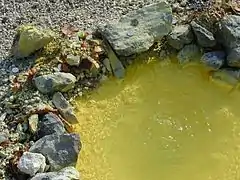
奥州三霊場 Ōshū sanreijō are the three most famous pilgrimage sites in the ancient land of Oku (奥), now known as Tohoku.
Three Famous Big Buddhas
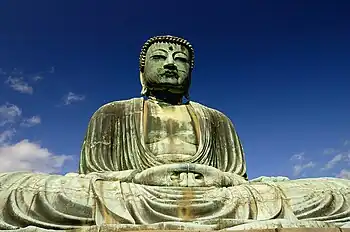
三大大仏 Sandai-daibutsu
Three Pagodas
三名塔 Sanmeitō
Three Hase Temples
三長谷 Sanhase
Nature
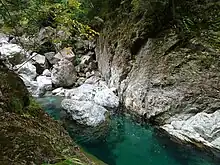
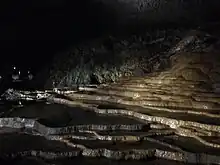
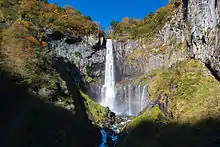
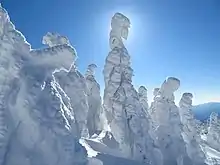
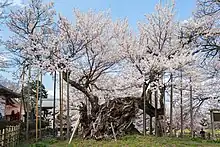
_01_May%252C_2012_-_panoramio.jpg.webp)
Three Famous Mountains
三名山 Sanmeizan (Three Famous Mountains), also 三霊山 Sanreizan (Three Sacred Mountains)
Top Three Gorges
三大渓谷 Sandai Keikoku
Three Caves
日本三大鍾乳洞 Niho Sandai-shōnyūdō
Three Waterfalls
日本三名瀑 Nihon San-meibaku
- Nachi Falls
- Kegon Falls
- Fukuroda Falls
Three Pine Groves
三大松原 Sandai-matsubara
Three Snow Monsters
三大樹氷 Sandai-juhyo
Certain mountains in northern Japan have the right trees and weather conditions to cover the trees completely in snow to transform them into Juhyo (樹氷) or "Snow Monsters" (also sometimes called "Ice Monsters" in Japanese). These sites were chosen because they feature a good number of snow monsters along with having a ski lift for easy access.
Cherry Blossom Spots
三大桜名所 Sandai Sakura Meisho
Cherry Blossom Trees
三大桜 Sandai-zakura
Cherry Blossom Spots of Tohoku
みちのく三大桜名所 Michinoku Sandai Sakura-meisho
"Michinoku" is a term used to refer to the Tohoku Region. Traditionally, it excludes Akita and Yamagata Prefectures but over time has become synonymous with the entire region as demonstrated by the presence of Kakunodate in Akita Prefecture on this list.
- Hirosaki Castle Park (Hirosaki, Aomori)
- Kakunodate (Kakunodate, Akita)
- Kitakami Tenshochi (Kitakami, Iwate)
Night Cherry Blossoms
三大夜桜 Sandai-yozakura
Towns
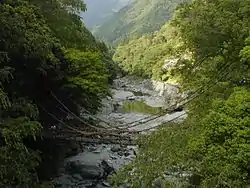
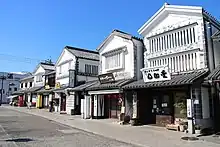
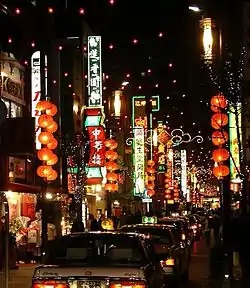
Three Hidden Regions
三大秘境 Sandaihikkyō
- Shirakawa-go, Gifu
- Iya Valley, Tokushima
- Shiiba, Miyazaki
Three Sake Towns
日本三大酒処
- Fushimi, Kyoto
- Nada, Kobe
- Saijō, Higashihiroshima
Three Historic Merchant Towns
日本三大蔵の町
Three Lacquerware Towns
日本三大漆器
Three Chinatowns
三大中華街 Sandai-chūkagai
Food
.JPG.webp)
.jpg.webp)
Soba
三大そば Sandai-soba'
Ramen
三大ラーメン Sandai-raamen
Udon
三大うどん Sandai-udon
Beef
三大和牛 Sandai-wagyu
Some sources also claim Yonezawa Beef (Yonezawa) is one of the top three beefs.
